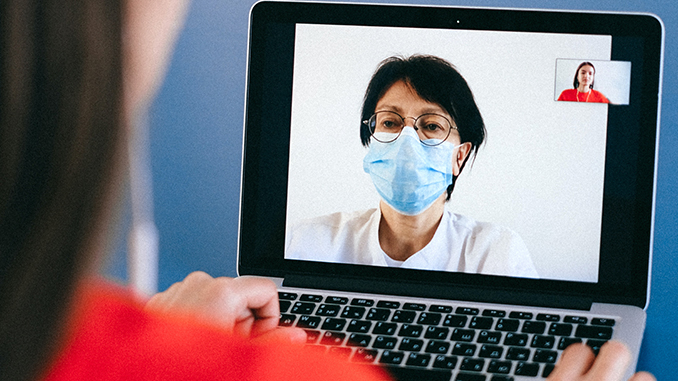
Here are a few ways to maximize the value of technology.
Published: May 18, 2020
By: Dr. James M. Lewis
Teleconferencing apps like Zoom promote good communication between families and physicians while preventing exposure to COVID-19. Although direct human contact and the ability to check height, weight, blood pressure and pulse are missing, the strategy does provide the face-to-face interaction necessary to adjust medication or manage learning and behavior problems. Here are few ways to maximize the value of technology.
- If you initially have trouble getting connected, feel free to call the office for advice. The phone conversation with the doctor is important even without video. Do not hesitate to ask your child for instructions as a first step – here is one area where they are always the real expert. The Wi-Fi option always gives the best reception.
- Try to set the computer, tablet or phone in a stable position in front of a window or light for your best picture. There is no need to clean the house, but eliminating the clutter directly behind you reduces distractions. Loud TVs, cats and dogs should be (temporarily) removed. Place your camera about eye level and try to look that direction as much as possible. Your best screen portrait is straight to reduce distortion to provide enough room for head and shoulders and appropriate gestures.
- Give your child the first opportunity to talk directly with the doctor. It is their life, after all, so their opinion about medication, school and home is important. It is helpful to know how they are learning – packets of papers to complete, on-line lectures from teachers, interactions with classmates, independent work or completing assignments on the computer. This is a unique opportunity for the family to discover where the student’s educational strengths and weaknesses lie – reading, comprehension, math, communicating ideas, getting thoughts on paper, staying organized.
- Questions about the medicine should come next: Are they taking it and at what time, how it works for them, what dose are they using, how long does it last, and does the effect match up well with the school work. It is useful to find out who helps with their assignments and how spend the rest of their day. Side effects or overdose reactions such as headaches, decreased appetite, irritability or feelings of dullness should be reported as well.
- The entire family should be encouraged to maintain as regular a schedule as possible for getting up, eating meals (especially breakfast), avoiding snacks, exercising outside if possible (with social distancing of course), monitoring video games and social media, going to bed and avoiding naps. Establishing and enforcing a routine time for waking up, eating breakfast and taking medicine is critical.
- After the parent has waited patiently listening, it is their turn on camera to describe what the school is doing, how the medicine is working and how things are going at home.
Don’t be discouraged if getting adjusted to the technology is frustrating, once the wrinkles are ironed out this could become and effective way of communicating with doctors, caregivers and educators for years to come.
Dr. James M. Lewis is board certified in both Pediatrics and the subspecialty of Neurodevelopment Disabilities with training at Houghton College, SUNY School of Medicine at Buffalo, the University of Maryland Hospital in Baltimore, and the Children’s Hospital of Pittsburgh. He is currently a Professor of Pediatrics at the Joan C. Edwards School of Medicine at Marshall University in the Department of Pediatrics. He is the author of Making Sense of ADHD.
